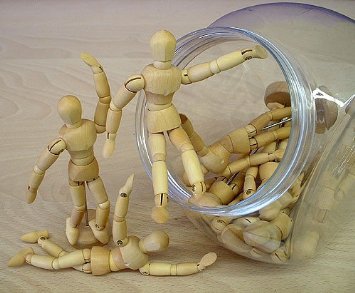Keim, B. (2010). “Study: Sense of Touch Shapes Snap Judgments.” www.wire.com. Visited on October 15, 2012: http://www.wired.com/wiredscience/2010/06/touching-cognition/ The article explains the interaction between physical touch and social cognition. Through studies, experimental evidence shows that physical experience and mental understanding are related. The sense of touch is one of the earliest senses to be developed by humans in the developmental process, and is not lost as a person ages. What’s more interesting is that the sense of touch can subconciously alter the mental state and emotion of a person. A person holding a heavier object such as a clipboard may become more serious and the task at hand becomes more important. People are more generous holding a warm drink than a cold one. Harsh surfaces make problem solving more akward than smoother surfaces. The article notes that the visceral reaction to the sense of touch may fade when one focuses more on the task at hand, but this fact doesn’t diminish importance of the the initial tactile social-interaction that forms the first impression. By changing sensations, emotions, thoughts, and desires may be altered. Evaluation Conceptual Design: In design usaability is not the only consideration. Designs evoke emotion and can alter a users mental state,…
Tag Archive for haptic feedback
Conceptual Design, Interaction Design, Interface Design, Perception, Pipsqueak Articles, Product Design Strategy, Scaffolding
Alternative Haptic Interface for 3D Animation and Drawing
by Olga Werby •

Qumarion built a prototype of a mannequin input device for intuitive 3D manipulation. For many years, artists used little wood manikins to help them with perspective and body positioning. 3D artists also used them for references, but there was no way translate directly from haptic manipulation of a little wooden figure into x, y, and z position in virtual space. Now there is:
Conceptual Design, Contributor, Interaction Design, Interface Design, Perception
Sense of Touch Shapes Snap Judgments
by patrickgary •
Keim, B., (2010). “Sense of Touch Shapes Snap Judgments.” Wired.com. Visited on October 3, 2010: http://www.wired.com/wiredscience/2010/06/touching-cognition/ Brandon Keim’s article for Wired.com’s science blog provides a brief overview of recent research into the role that tactile sensations play in human interactions. This new area of psychological research, referred to as Embodied Cognition, could potentially have a significant impact on how we understand social and physical interactions. Put simply, the core findings of the research show that our physical responses to our immediate environment, combined with other factors, can directly and measurably influence our decision-making. One of the examples provided involved giving the subject a heavy clipboard to hold during the experiment; when holding the heavy clipboard, the subjects tended to regard their own opinions and problems presented to them as being more weighty and serious in nature. Other examples showed how a tactile interaction with a rough surface prior to an interview could lead to a harsher attitude towards the interviewee. The article itself is somewhat of a stub, so we are left to imagine the further implications of Embodied Cognition ourselves. What relevance does Embodied Cognition have for product interaction design? After all, it’s not as if touch has previously…
